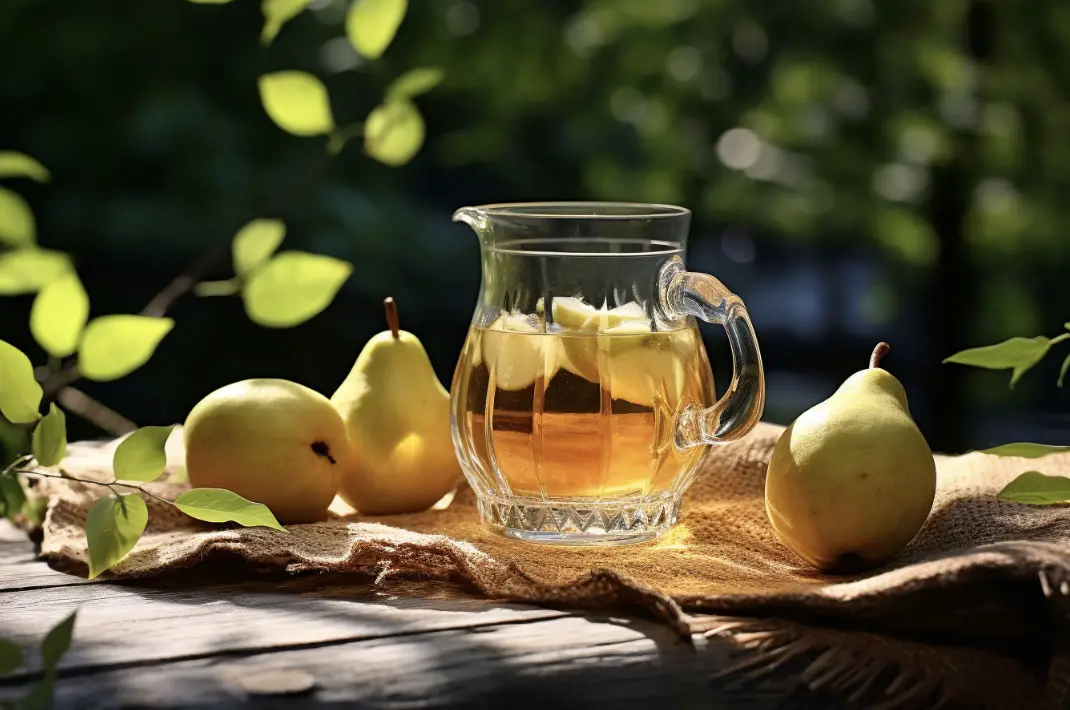For beer enthusiasts, labels can be quite an educational experience. One label that always raises eyebrows is the “Contains Sulfites” notification.
Sulfites, known for their antioxidant and antimicrobial effects, have a notorious reputation that often sends beer lovers into a tizzy of questions. But the real query is: Can you get beers with low or no sulfites?
Absolutely! There are beers that contain low to minimal sulfites. Let’s dive into this world, and demystify this common, yet misunderstood, beer ingredient.
Sulfite Content in Different Beer Types
The sulfite content in beer can vary based on several factors, including the beer type, the brewing process, and whether or not additional sulfites were added during brewing. Here’s a guide to understanding the typical sulfite content found in various beer styles:
| Beer Type | Typical Sulfite Content (ppm) | Notes |
|---|---|---|
| Lager | 10-20 ppm | Lagers, especially mass-produced ones, might have slightly higher sulfite content due to the preservation needs of longer shelf lives. |
| Ale | 5-15 ppm | Ales, particularly those from craft breweries, might have lower sulfite levels. They’re also brewed at warmer temperatures which can influence sulfite production. |
| Stout | 5-10 ppm | Darker beers like stouts generally have fewer sulfites, especially if they rely more on roasted malts for preservation. |
| Wheat Beer | 10-20 ppm | The cloudy nature and freshness of wheat beers might sometimes warrant slightly higher sulfite levels. |
| IPA (India Pale Ale) | 10-25 ppm | Historically, IPAs had higher hop content for preservation during long sea voyages. Modern IPAs, especially if dry-hopped, may have varied sulfite content based on brewing practices. |
| Sour Beers | 5-10 ppm | Due to the presence of lactic acid bacteria and wild yeasts, sour beers may naturally have lower sulfite levels. |
| Barleywine | 15-25 ppm | Being a stronger and sometimes sweeter beer, barleywines might have higher sulfites for preservation. |
| Cider | 20-150 ppm | While not a beer, it’s worth noting that ciders can have higher sulfite levels, especially if no preservatives other than sulfites are used. |
As beer production methods and consumer demands evolve, brewers continue to adapt their techniques. This might lead to shifts in typical sulfite contents in the future. Always ensure you’re up-to-date with the latest brewing trends and information if sulfites are a concern for you.
Where Do Sulfites Come From?
Contrary to common misconception, sulfites are a natural product of yeast fermentation. So, if you’re sipping on any fermented beverage, chances are, you’re consuming a degree of sulfites. Sulfites also have other utilities in beer production.

They’re used in preventing oxidation, inhibiting microbial growth, and even sanitizing brewing equipment. They can be found in powdered form as sodium metabisulfite and potassium metabisulfite, each having their specific characteristics.
It’s essential to differentiate between sulfites and the off-flavors often associated with them. Sulfites are NOT responsible for the sulfurous/rotten egg aroma — hydrogen sulfide and ethyl mercaptan are the real culprits.
Natural Sulfite Production
Natural sulfite is an antioxidant produced by yeast during fermentation. The amount present at the end of fermentation varies, with most strains producing less than 30ppm. Factors like must/wort clarity and low aeration can promote this production. Thus, the fermentation conditions you opt for can significantly influence the sulfite levels in your beer.
The Importance of Fermentation Conditions and Yeasts
Beer’s flavor stability is profoundly affected by the sulfite levels, which are determined by wort fermentation conditions. Parameters like wort aeration, pitching rate, temperature, and pressure play critical roles in sulfur dioxide formation during brewing. For instance, the findings of Kaneda et al. suggest that wort fermentation conditions impact both the sulfite level and beer’s flavor stability. The research emphasizes that the right sulfite concentration in packaged beer enhances the beer’s flavor stability.
Additionally, the type of yeast used is crucial. Ale yeasts and lager yeasts differ in their sulfite production capabilities, which can lead to varying sulfite concentrations in the final beer. Yeasts produce sulfites by reducing sulfate, and certain yeast strains can generate significantly different amounts of sulfite.
How to Avoid Excessive Sulfites when brewing
- Low Oxygen Brewing: One way to combat excessive sulfites is to adopt low oxygen brewing. In this method, sulfite is added just before dough-in to stave off oxidation. This is crucial as sulfites play an essential role in preventing oxidation.
- Monitor Fermentation Conditions: As emphasized earlier, the conditions under which fermentation occurs have a direct impact on the sulfite levels. Brewers should pay attention to factors like wort aeration, pitching rate, temperature, and pressure.
- Choice of Metabisulfite: While both sodium and potassium metabisulfite serve the purpose, the latter is generally preferred in winemaking due to its flavor neutrality. In beer brewing, one should be cautious as high potassium levels can inhibit enzymes during the mash.
Beers with Low or No Sulfites
While it’s virtually impossible to find beers with zero sulfites due to the natural production during fermentation, there are brews with significantly lower levels. Craft breweries often pride themselves on producing beers with minimal additives, which can include lower sulfite levels.
Recommendation for those sensitive to sulfites: Seek out breweries that emphasize natural and minimalistic brewing processes. Always read the labels and, when in doubt, ask the brewer directly. They are usually quite knowledgeable and open about their brewing methods.
How does sulfite levels in beer compare to those in other beverages?
Sulfite levels in alcoholic beverages can vary significantly based on several factors, including the type of beverage, its production method, and whether additional sulfites are added as preservatives. Here’s a general comparison of sulfite levels across beer, cider, mead, and wine:
- Beer:
- Sulfite levels in beer tend to be relatively low compared to other alcoholic beverages. Many beers have sulfite concentrations of less than 10 ppm, especially if they haven’t had sulfites added. Some might reach slightly higher levels, especially if they’ve been preserved with added sulfites.
- Cider:
- Ciders, especially commercial varieties, often have added sulfites to preserve freshness and prevent oxidation. This means they can contain higher sulfite levels than most beers. Typically, ciders can have sulfite concentrations ranging from 10 ppm to 200 ppm. The exact amount can vary based on production methods and whether it’s a commercial or craft product.
- Mead:
- Mead, a fermented beverage made from honey, water, and sometimes additional ingredients like fruits or spices, can have variable sulfite levels. Like cider, commercial varieties might contain added sulfites as preservatives, leading to higher concentrations. However, traditionally made meads without added preservatives might have sulfite levels comparable to or even lower than those in beer.
- Wine:
- Among these beverages, wine generally has the highest sulfite content, especially in white wines. This is because wine’s higher sugar content and less acidity make it more prone to bacterial spoilage and oxidation. Sulfites help maintain wine’s freshness and color. Wines can have sulfite levels ranging from 10 ppm to over 400 ppm, with the average being somewhere around 80-200 ppm. Note that “organic” wines or those labeled as “no added sulfites” will typically have lower levels, though they will still have naturally occurring sulfites.
While beer generally has lower sulfite levels compared to cider, mead, and especially wine, it’s essential to be aware that there’s a wide range within each category.
Those who are sensitive to sulfites should always check labels and, when in doubt, consult the manufacturer or producer for specific information.
Conclusion
Sulfites in beer, both naturally occurring and added, play an essential role in maintaining the freshness and flavor of the brew. However, for those sensitive or looking for minimal additive experiences, there are options available.
Quick Facts:
- Sulfites are natural by-products of yeast fermentation.
- They serve as antioxidants and anti-microbial agents in beer.
- Sulfurous/rotten egg aroma is not due to sulfites but other compounds like hydrogen sulfide.
- Fermentation conditions, like wort aeration and temperature, play a key role in sulfite production.
- Ale and lager yeasts can produce different sulfite levels.
- Low oxygen brewing can help in controlling oxidation and sulfite levels.
- Potassium metabisulfite is generally preferred due to its flavor neutrality.
- Craft breweries might offer beers with minimal additives, including sulfites.
- It’s essential to differentiate between sulfites, sulfate, and sulfide.
- Always read labels and communicate with brewers if concerned about sulfite levels in beer.
Cheers to a better understanding of sulfites in your beer! 🍻
FAQs on Sulfites in Beer
Q1: Why are sulfites added to beers and other alcoholic beverages?
A1: Sulfites are primarily used as preservatives to prevent microbial growth and to preserve the freshness and taste of the beverage. They also act as antioxidants, preventing browning and discoloration in drinks.
Q2: Can beers be completely sulfite-free?
A2: While many beers naturally produce sulfites during fermentation, it’s possible to find beers with extremely low sulfite levels. However, a completely sulfite-free beer is rare because small amounts of sulfites are naturally produced during the fermentation process.
Q3: Are there any health concerns associated with consuming sulfites in beer?
A3: For most people, consuming sulfites in moderation is safe. However, a small percentage of people, especially those with asthma, may be sulfite-sensitive. They could experience reactions like headaches, hives, and respiratory problems. If you believe you’re sensitive to sulfites, it’s best to consult with a healthcare professional.
Q4: How can I identify if a beer has added sulfites?
A4: In many countries, if a beer (or any alcoholic beverage) contains more than 10 ppm of sulfites, it must be labeled with a “contains sulfites” warning. Always check the label or consult the brewery’s information.
Q5: Do other alcoholic beverages like wine have higher sulfite levels than beer?
A5: Yes, many wines, especially white wines, tend to have higher sulfite levels than most beers. This is because wine, which has a higher sugar content and less acidity than beer, is more susceptible to bacterial spoilage and oxidation, hence requiring more sulfites for preservation. However, the exact amount can vary widely depending on the wine type and production method.





